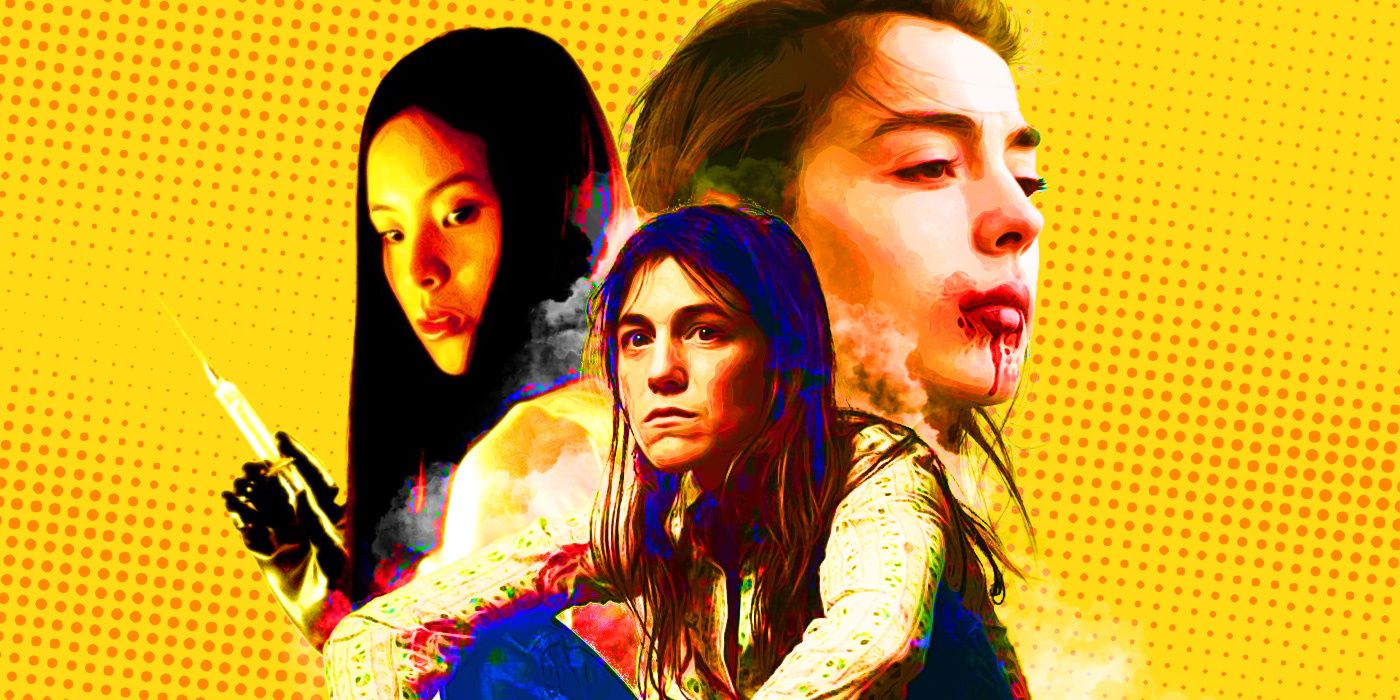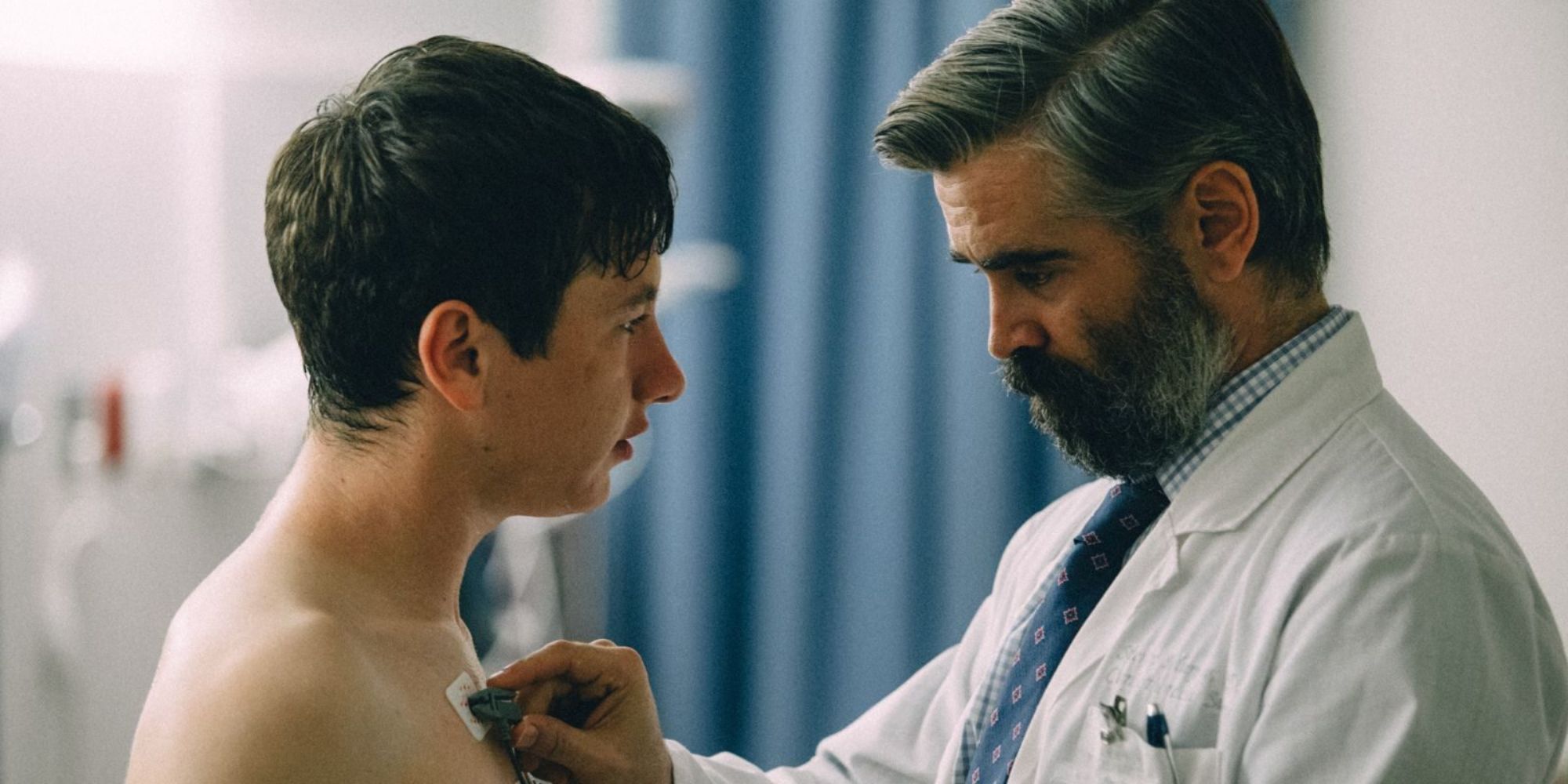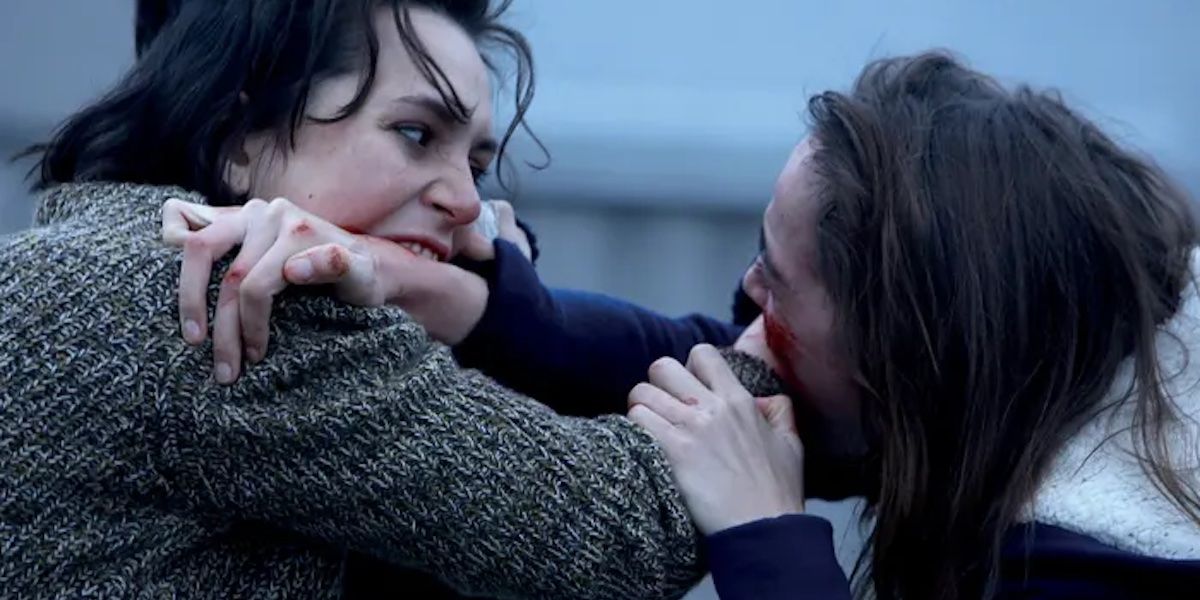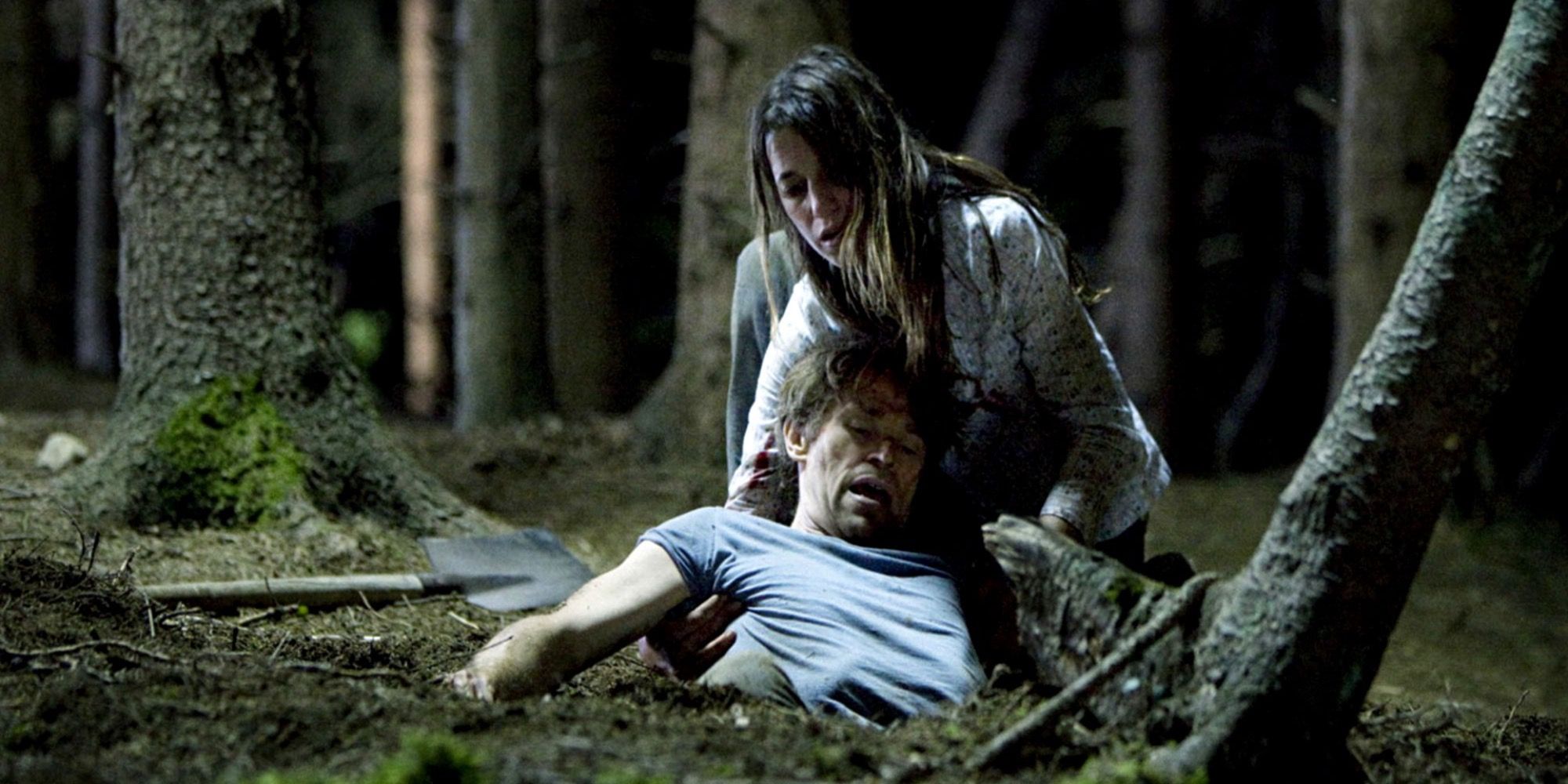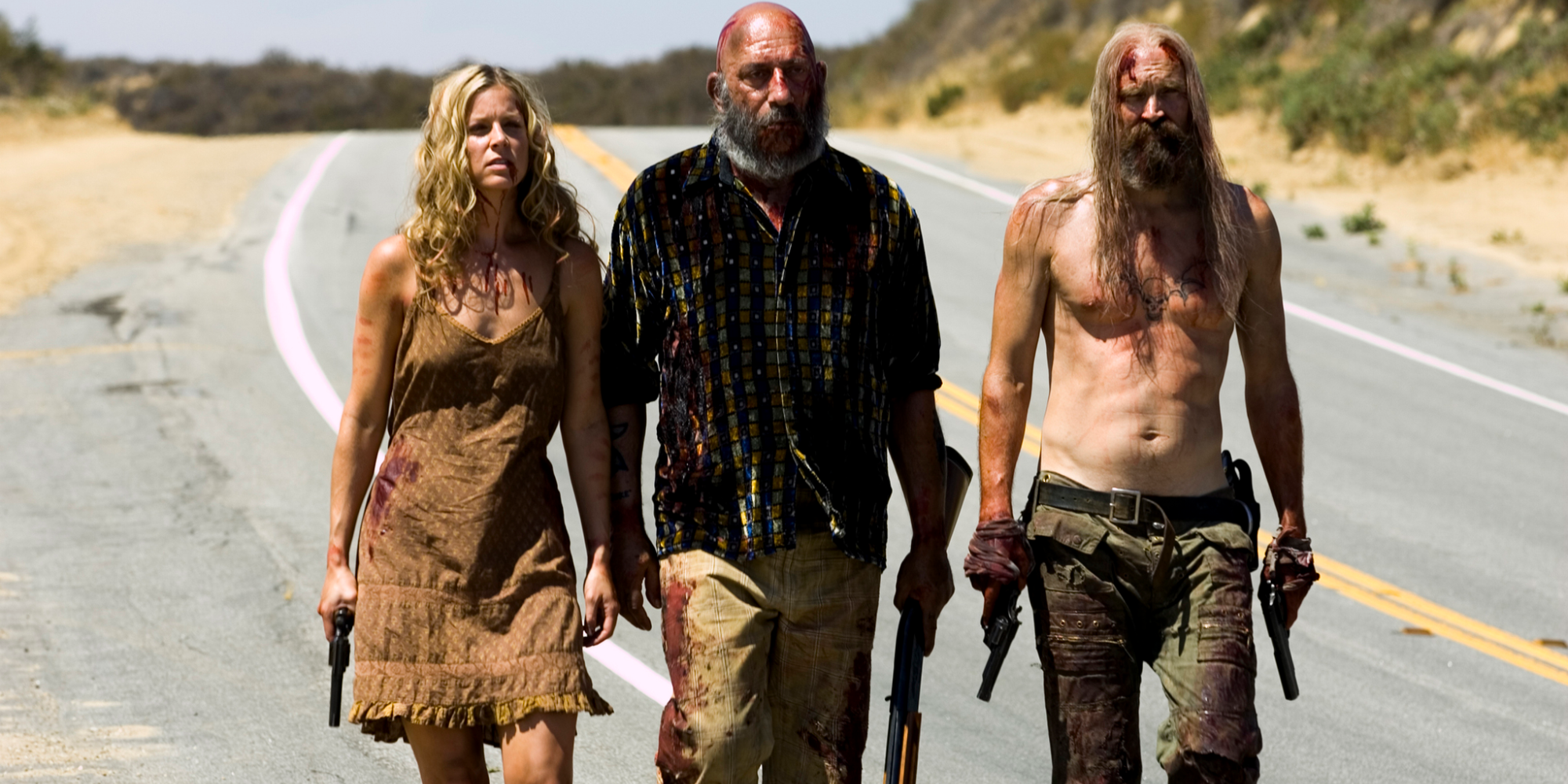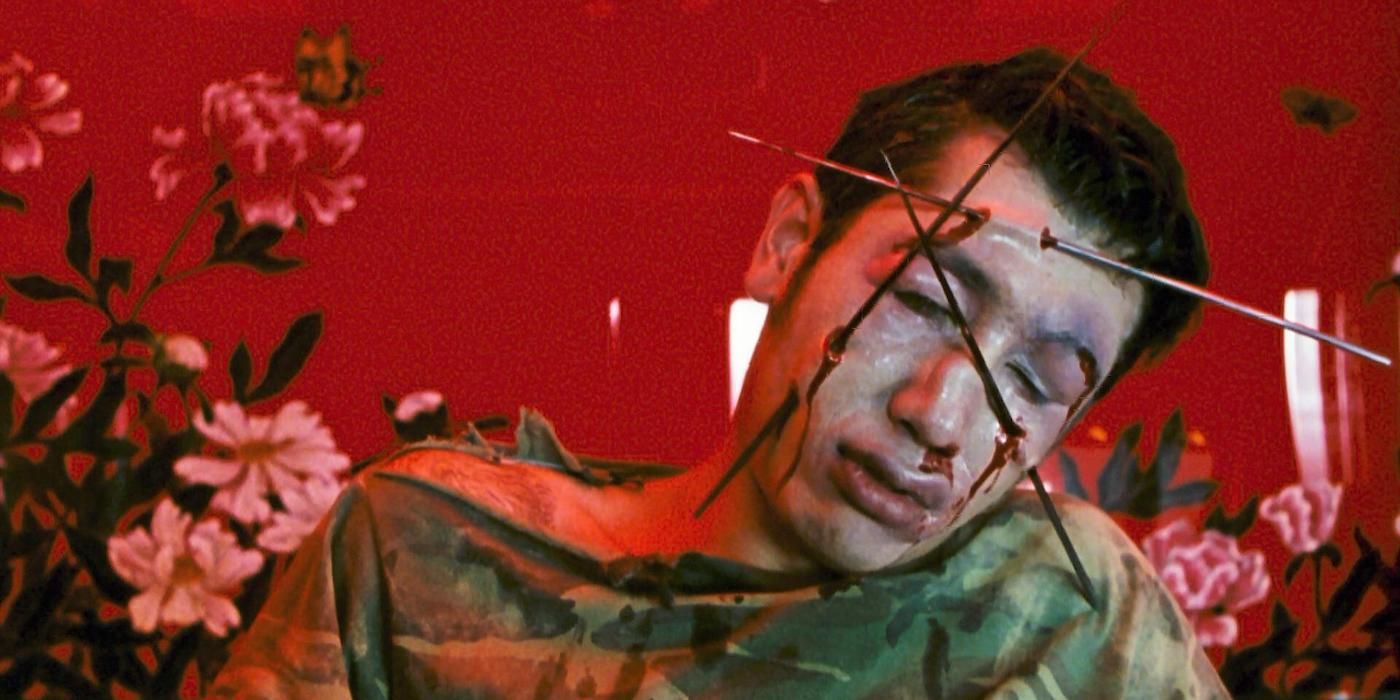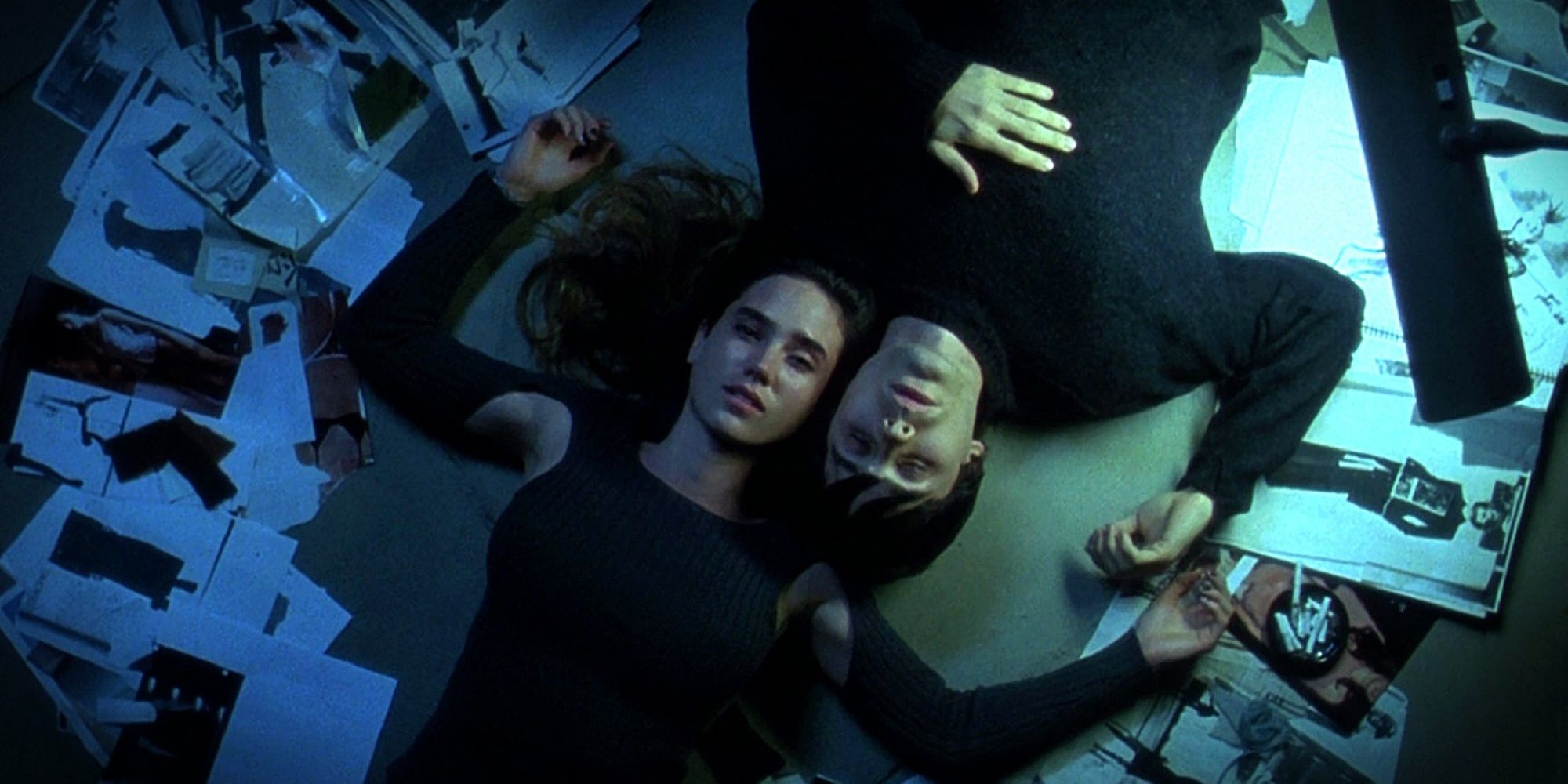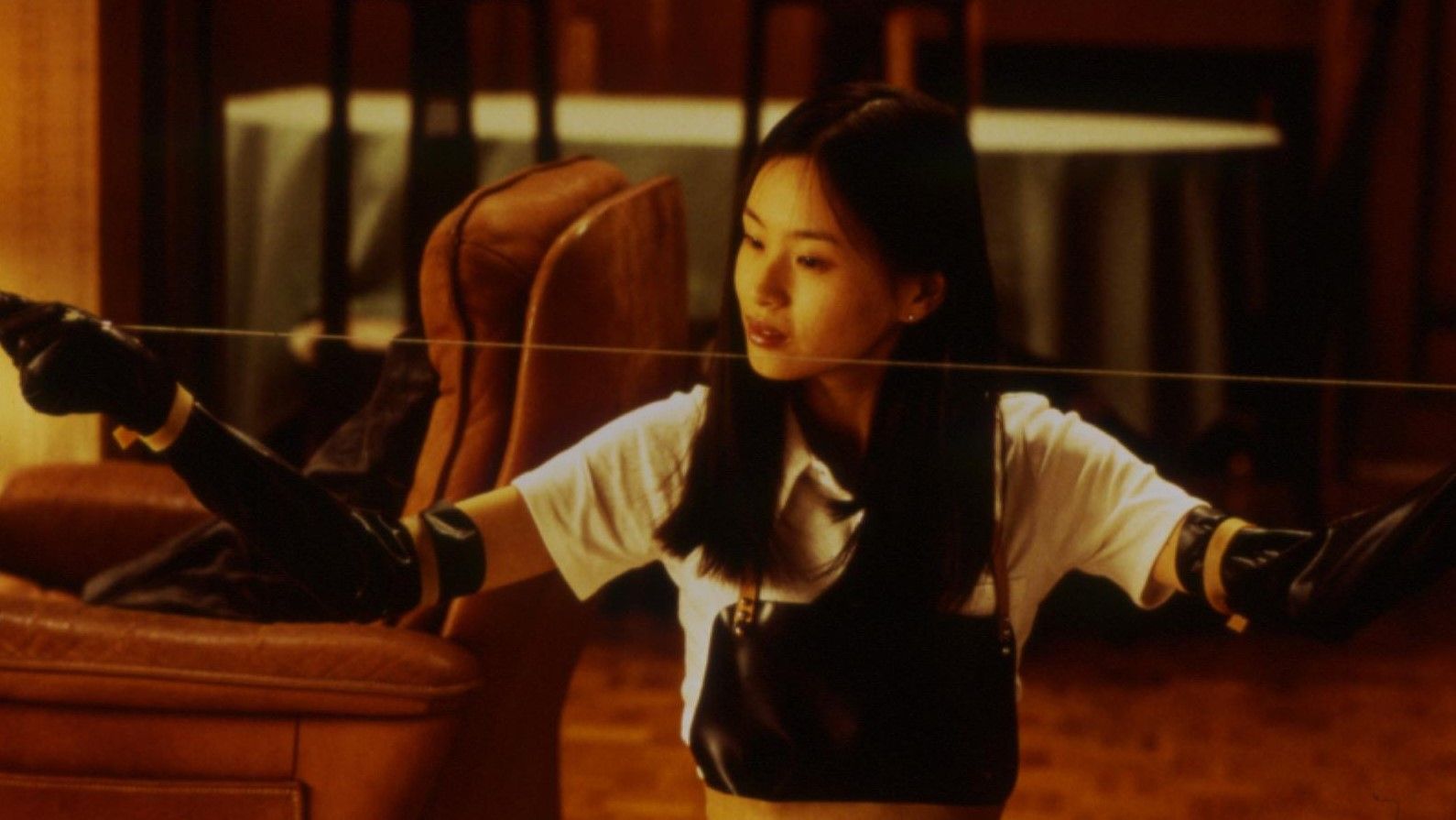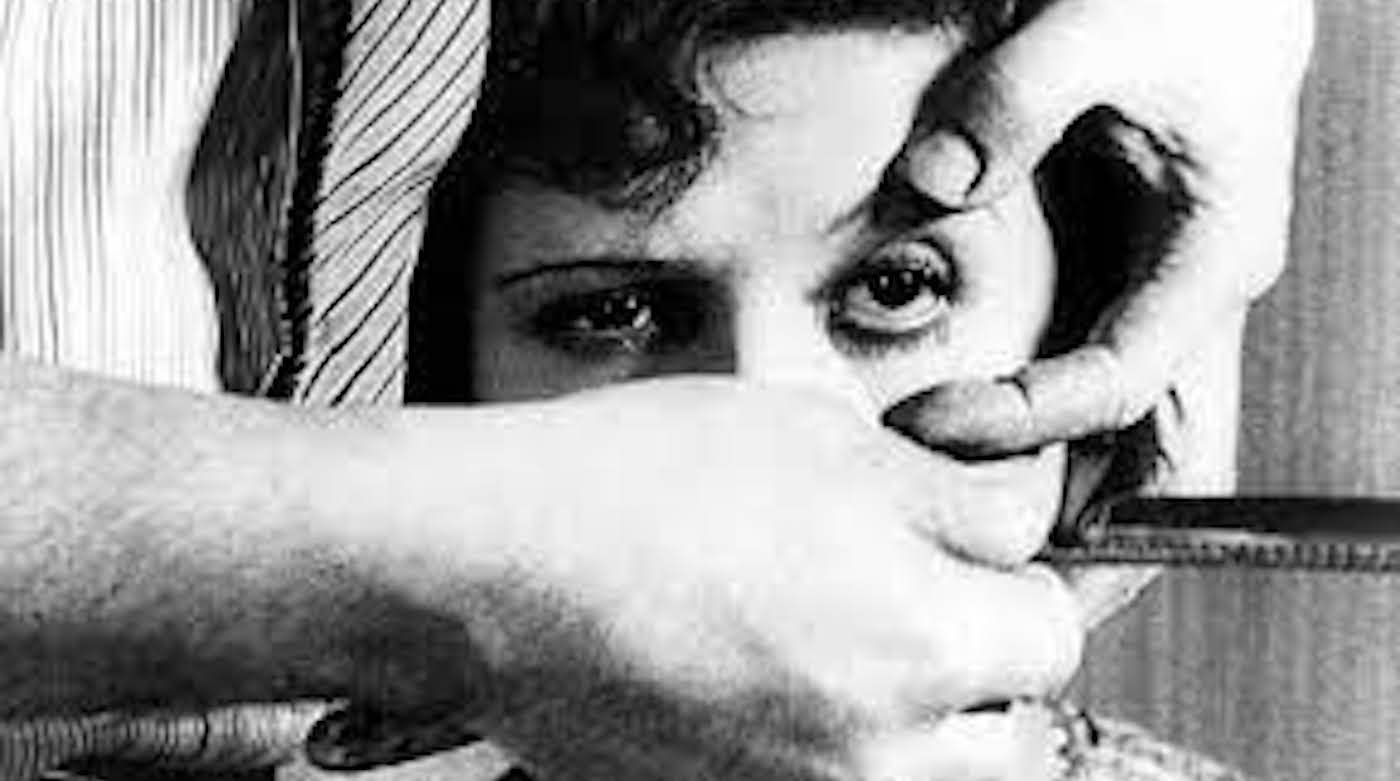There are some beloved films that viewers want to appreciate again and again, often because of their uplifting message or endearing central characters. Then there are essential cinematic trips you only want to take once, mainly because of the extreme content or incredibly bleak viewpoint. We’ve picked 15 movies that will burn themselves onto your retinas – so no need for a repeat viewing.
The Killing of a Sacred Deer (2017)
This horror movie from idiosyncratic director Yorgos Lanthimos handles its genre tropes in a particularly disturbing manner. In a great cast, Barry Keoghan stands out as a young man seeking revenge on the surgeon he blames for his father’s death. Inspired by Greek tragedy, the physical and psychological torture that he inflicts on Steven Murphy (Colin Farrell) and his family is relentless, letting the audience know that he won’t stop until he feels justice has been delivered. Keoghan is chilling (and shows why he’ll make a great Joker), but it’s the outcome of his intervention in the lives of the family that is truly disturbing. Possessing the twisted logic of ancient myth, where punishment is dealt out at a level of cruelty that exceeds the crime, it’s as cold as it is brilliant.
Raw (2016)
Julia Ducournau’s debut feature is one of the most challenging and original horror movies in recent years. Raw concerns veterinary student and vegetarian, Justine (Garance Marillier), as she discovers a taste for human flesh under the guidance of her big sister, Alexia (Ella Rumpf). In Raw’s most excruciating scene, a botched bikini-waxing sets up images of soon-to-be torn skin but veers into twisted comedy involving a severed finger and a dog – only to culminate with Justine eating her sister’s flesh off the bone. It’s as confronting as Ducournau’s stunning follow-up, Titane, and not to be watched before dinner.
Antichrist (2009)
Even by Lars von Trier’s standards, Antichrist is bleak. Despite its biblical title, the film is about all-too-human grief and trauma. Following the death of their son, a woman (Charlotte Gainsbourg) and her husband (Willem Dafoe) retreat to an isolated cabin to heal. The result is madness and mutilation. Among the films on this list, Antichrist stands out as the abuses inflicted on the characters pull no punches, including a graphic scene of genital mutilation. Written while von Trier was hospitalized for depression, Antichrist channels his depressive episode onto the screen for all to see.
Martyrs (2008)
The influence of Martyrs can be seen in (comparatively) lighter efforts such as The Hunt and Fresh, in which chaos is orchestrated by the agendas of secret societies. However, Martyrs is ruthless in its depiction of religious fundamentalism and the bodily torture suggested by the title. Opening with the murder of a seemingly innocent family by a survivor of abuse, the film reveals its secrets with terrible inevitability. Martyrs was highly controversial in its native France on release, but its right to not be censored was staunchly defended. It certainly treads a fine line between serious intent and entertainment, making this a one-time trip to a very dark place.
The Devil’s Rejects (2005)
Few horror movies are as audaciously nasty as Rob Zombie’s The Devil’s Rejects. It’s his film that comes closest to truly achieving a 70s slasher aesthetic, upping the ante on the most gruesome offerings of that period. The members of the outlaw Firefly Family are grotesque, particularly the coulrophobia-inducing Captain Spaulding (Sid Haig), although they’re quasi-sympathetic in comparison to the psychotic lawmen on their tail. At a time when many US horror films were taking the Scream route of more accessible thrills, The Devil’s Rejects was a full-blooded assault on the senses. It’s a modern horror classic that simultaneously feels like a mongrel blast from the past.
Dead Man’s Shoes (2004)
Revenge has rarely been so miserable as Shane Meadows‘ Dead Man’s Shoes. It’s a gang movie of sorts, although it transposes the action from the city to the deceptively beautiful surrounds of the English Peak District. This is a film about the desperation and cruelty of life in dead-end towns. Paddy Considine excels as an ex-paratrooper who comes home to avenge the abuse of his brother who is a person with a learning disability. There’s a brutal sequence in which he drugs and tortures the men responsible, but it’s clear that he’s as damaged and complicit as any of them. The film’s reveal about what really happened to his sibling brings it home with a bleak ending to remember.
Irréversible (2002)
A truly upsetting and difficult film, director Gaspar Noé’s reverse timeline is more than just a gimmick – it highlights the destruction and trauma inflicted by abuse. Starting with the killing of a man in a nightclub, the film progresses backward over the course of one night in several episodes. The most disturbing of these is the 9-minute-long sequence in which Alex (Monica Bellucci) is raped and beaten. Filmed in a single shot, it’s one of cinema’s most graphic scenes and considered unwatchable by many viewers. Irréversible is not entertainment, but it is a serious statement. The film’s structure, which ends with Alex sitting in a park earlier in the day with the revelation that she is pregnant, only adds to the terrible awareness of what is to come.
Ichi the Killer (2001)
The first of two films on this list by Japanese provocateur Takashi Miike, Ichi the Killer is an extreme take on the Yakuza film. Ichi (Nao Ōmori), a highly disturbed young man who becomes violent and sexually aroused when provoked, is used as a tool in gang warfare. Even within Miike’s filmography, it’s an extreme effort, one that is relentless in its desire to shock and surprise. The gore is outrageous, amplified by the director’s portrayal of a thoroughly amoral landscape where he refuses to make any judgments, which is then thrown back at the audience, stripping them of the ability to make any moral judgments of their own.
Requiem for a Dream (2000)
While it has a fair share of graphic drug use and sex, Darren Aronofsky’s Requiem for a Dream makes the list because it’s a soul-crushing movie – brilliant in its performances and direction, but not an experience many people will sign up for twice. The four main characters depict a downward spiral of drug abuse and desperation that breaks each of them in different ways. What happiness they experience is fleeting in an otherwise bleak existence. While heroin addiction is the downfall of the younger protagonists, it’s Ellen Burstyn who gives the standout performance as prescription amphetamines insidiously destroy her world. The film isn’t subtle, but its main characters are sympathetically played, making the final tragedy even more awful. An essential downer.
Audition (1999)
Miike again, this time with the story of Shigeharu (Ryo Ishibashi), a widowed salary man who sets up a fake film audition to find a new lover. The first part of the film is disturbing enough, a commentary on the abuse of power in male-dominated situations that only has greater resonance in the MeToo era. The eventual punishment inflicted by Asami (Eihi Shiina), the object of his affections, is extreme – especially for viewers who are needle-phobic. Asami’s habit of amputating the body parts of the men who do her wrong is an obvious castration metaphor. Despite its violence, Audition is one of Miike’s most controlled and effective movies, a horror version of Fatal Attraction that doesn’t let the male protagonist off the hook.
Funny Games (1997)
An art-house take on the home invasion thrillers of the 90s (and the German Heimat genre), Funny Games is a grueling watch because it refuses the audience any form of catharsis. In fact, it uncomfortably turns the lens back on the viewer and their role in the abuses of the film. The upper-middle-class family taken hostage in their own home are doomed from the start because one of their attackers, Paul (Arno Frisch), has control of the text. In a typical genre moment, a family member gets free and grabs a shotgun, but Paul uses a remote control to wind back the scene and change the outcome. He questions the role of the audience as complicit in the “entertainment,” as he directs the torture to conform with thriller expectations, specifically delaying the final murders to increase tension. Director Michael Haneke, in a further meta-textual assault, directed a shot-for-shot US remake in 2007 for anyone looking for more punishment.
Henry: Portrait of a Serial Killer (1990)
The ultra-low-budget nature of Henry: Portrait of a Serial Killer only adds to its effectiveness. Set in the squalid underbelly of 80s America, it’s an antidote to the glossy depiction of serial killers to come. It shows Henry (Michael Rooker) as an opportunist, drifting from one murder to another to avoid detection, containing none of the psychological profiling of movies like Silence of the Lambs. Rather, the film suggests only a nihilistic urge to kill that finds its outlet in one confronting scene after another. Even more disturbing than Henry is Otis (Tom Towles), who happily escalates to murder upon his friend’s request, mainly to satisfy his sexual urges. Of the many murders, the killing of a black-market fence and the scene in which Henry and Otis watch a videotape of a home invasion are particularly hard to watch. Nevertheless, Henry: Portrait of a Serial Killer is a must-see for the way in which strips back the conventions of the genre, refusing to romanticize its subject.
Come and See (1985)
Perhaps the greatest anti-war film, director Elem Klimov had to fight eight years of Soviet censorship to get it made. It was certainly worth it as Come and See is a triumph in its depiction of the atrocities of war, especially those of an invading force. Set in Nazi-occupied Belarus, a 14-year-old boy’s odyssey through a landscape of destruction is shown with brutal realism. The film’s power resides in its unwavering focus on the victims of war, both in the moment of violence and the resulting trauma. A truly important film and one that unquestionably doesn’t glamorize its subject, Come and See’s ongoing relevance is a sad statement of where we are right now. It’s a film to be seen, but not one to be enjoyed.
Salò, or the 120 Days of Sodom (1975)
1970s Italian cinema examined the country’s Fascist past in classics such as Federico Fellini’s Amarcord and Bernardo Bertolucci‘s The Conformist. However, it’s Pier Paolo Pasolini’s Salò that confronts the audience with a heightened take on the horrors of the time through an unrelenting depiction of degradation and torture. Set in the Fascist Republic of Salò, four wealthy men order a group of teenagers rounded up and brought to a mansion, where they are systematically raped and abused. Even among the films on this list, Salò is extreme and divisive. It invokes the work of Marquis de Sade, Dante’s Inferno, and the abuses of the Roman emperors in the atrocities it depicts. While many films raise questions about their merits, Salò provoked debate among critics about whether it should be watched at all. That’s up to the individual to decide, but Salò remains a test of endurance for any viewer and a powerful warning from and about the past.
Un Chien Andalou (1929)
This collaboration between artist Salvador Dalí and director Luis Bunuel contains one of the most famous and disturbing images in cinema. Opening with a dream-like montage of a cloud passing across the moon and a man sharpening a straight razor, its unforgettable image is of a young woman having her eyeball cut open with the same razor. For a film nearly 100 years old, it’s still a cringe-inducing moment, tapping into deep vulnerabilities. The film is suffused with scenes of death and decay typical to the surrealists – not least its shot of ants crawling from a hole in a man’s hand. Uncanny in the manner of a nightmare, it’s an unforgettable experience.























































![Social Media Spring Cleaning [Infographic] Social Media Spring Cleaning [Infographic]](https://imgproxy.divecdn.com/9e7sW3TubFHM00yvXe5zvvbhAVriJiGqS8xmVFLPC6s/g:ce/rs:fit:770:435/Z3M6Ly9kaXZlc2l0ZS1zdG9yYWdlL2RpdmVpbWFnZS9zb2NpYWxfc3ByaW5nX2NsZWFuaW5nMi5wbmc=.webp)
![5 Ways to Improve Your LinkedIn Marketing Efforts in 2025 [Infographic] 5 Ways to Improve Your LinkedIn Marketing Efforts in 2025 [Infographic]](https://imgproxy.divecdn.com/Hv-m77iIkXSAtB3IEwA3XAuouMwkZApIeDGDnLy5Yhs/g:ce/rs:fit:770:435/Z3M6Ly9kaXZlc2l0ZS1zdG9yYWdlL2RpdmVpbWFnZS9saW5rZWRpbl9zdHJhdGVneV9pbmZvMi5wbmc=.webp)




